- Introduction of 6061 Aluminum Plate Sheet
- Basics of 6061 Aluminum Plate
- 6061 Aluminum Plate Tempers and Mechanical Properties
- 6061 Aluminum Plate Applications
- 6061 Aluminum Plate Manufacturing Processes
- Surface Treatments and Finishes
- 6061 Aluminum Plate Sustainability and Recycling
- 6061 Aluminum Plate Quality Standards and Certification
- 6061Aluminum Plate Selection and Procurement
Introduction of 6061 Aluminum Plate Sheet
Aluminum is a versatile and widely used material in various industries due to its excellent combination of strength, lightness, corrosion resistance, and workability.
Among the numerous aluminum plates available, 6061 aluminum plate is one of the most popular choices for applications requiring structural strength, exceptional corrosion resistance, and machinability.
In this comprehensive guide, we will delve into the world of 6061 aluminum plate, exploring its properties, applications, manufacturing processes, and much more, providing you with a detailed understanding of this remarkable material.
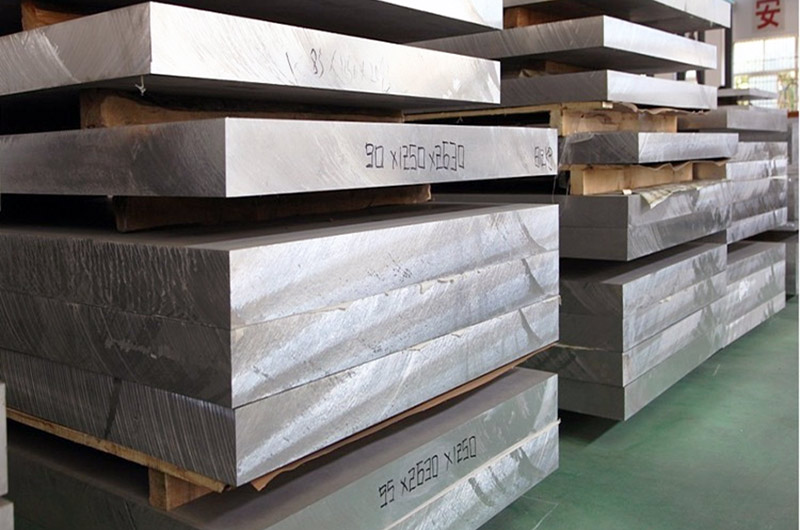
Basics of 6061 Aluminum Plate
6061 Aluminum Plate Sheet Composition and Alloying Elements
6061 aluminum plate belongs to the 6xxx series of aluminum plates. Its chemical composition primarily consists of:
- Aluminum (Al): 95.85%
- Magnesium (Mg): 1.0%-1.6%
- Silicon (Si): 0.4%-0.8%
- Copper (Cu): 0.15%-0.4%
- Iron (Fe): 0.7% max
- Manganese (Mn): 0.15% max
- Chromium (Cr): 0.04%-0.35%
- Zinc (Zn): 0.25% max
- Titanium (Ti): 0.15% max
- Other Elements: 0.05% each, 0.15% total max
The alloying elements play a crucial role in the material's mechanical and physical properties. The combination of magnesium and silicon imparts exceptional strength, while the copper content contributes to corrosion resistance and improved machinability.
6061 Aluminum Plate Sheet Key Properties
6061 aluminum plate is renowned for its remarkable properties, making it suitable for a wide range of applications. Here are some of its key properties:
1. Strength and Hardness
6061 aluminum plate offers good mechanical strength.
Its tensile strength typically ranges from 207 to 310 MPa, depending on the temper.
The hardness can vary from 18 to 42 HB, again depending on the temper. This makes it a preferred choice for structural applications where strength and durability are essential.
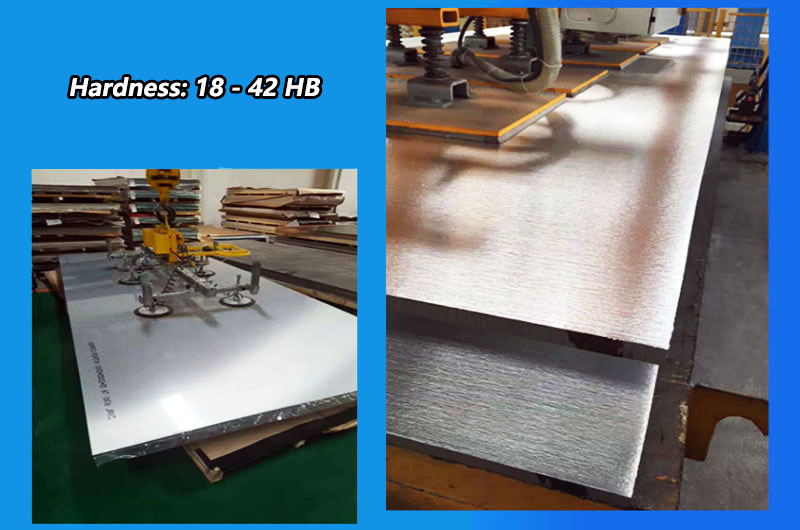
2. Corrosion Resistance
6061 aluminum plate exhibits excellent resistance to corrosion. The presence of copper in the alloy enhances its corrosion resistance, especially in marine and acidic environments. However, it is essential to protect the surface through coatings or anodizing in some applications.
3. Weldability
6061 aluminum plate is readily weldable using various welding techniques, such as TIG (Tungsten Inert Gas) welding and MIG (Metal Inert Gas) welding. It is important to use appropriate welding practices to maintain the material's integrity during the welding process.
4. Machinability
This alloy has good machinability, which means it can be easily cut, drilled, and shaped using conventional machine tools. It can also be easily worked through processes like turning, milling, and drilling, making it a popular choice for manufacturing various components.
5. Formability
6061 aluminum is also highly formable, making it suitable for applications that require shaping and bending, such as the automotive and aerospace industries. It can be extruded into complex profiles and pressed into various shapes without significant loss of strength or structural integrity.
6. Thermal Conductivity
With a thermal conductivity of approximately 166 W/m·K, 6061 aluminum plate is known for its ability to dissipate heat effectively. This property is crucial in applications that involve heat transfer, such as heat sinks in electronics.
7. Electrical Conductivity
6061 aluminum plate exhibits good electrical conductivity, making it suitable for electrical applications, especially when combined with its other properties like corrosion resistance.
8. Density
The density of 6061 aluminum is approximately 2.7 g/cm³, which is about one-third the density of steel. This low density is a significant advantage in weight-sensitive applications, such as aerospace and automotive components.
9. Surface Finish
6061 aluminum plate can achieve various surface finishes, from a natural, mill finish to polished, anodized, or coated surfaces. The choice of finish depends on the application's aesthetic and functional requirements.
6061 Aluminum Plate Tempers and Mechanical Properties
6061 aluminum plate is available in various tempers, which are heat treatment processes applied to achieve specific mechanical properties. The most common tempers for 6061 aluminum plate are T6 and T651.
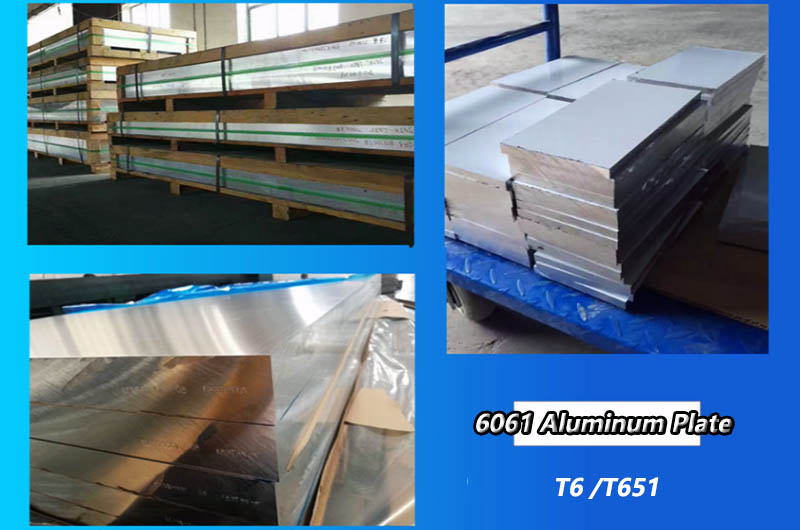
6061 T6 Aluminum Plate
The T6 temper involves solution heat treatment followed by artificial aging. This process imparts the highest level of mechanical properties to the material. The key properties of 6061-T6 aluminum plate include:
- Tensile Strength: 310 MPa
- Yield Strength: 276 MPa
- Elongation: 8%
- Brinell Hardness: 95
The 6061-T6 temper offers excellent strength and is widely used in structural applications, aerospace components, and general engineering.
6061 T651 Aluminum Plate
The T651 temper is similar to T6 but with additional stretching to relieve residual stress. This temper has the following mechanical properties:
- Tensile Strength: 310 MPa
- Yield Strength: 276 MPa
- Elongation: 8%
- Brinell Hardness: 95
6061 T651 Aluminum Plate provides good mechanical properties and is commonly used in applications where flatness and stability are critical, such as precision components and tooling.
6061 Aluminum Plate Applications
6061 aluminum plate's versatile properties make it suitable for a wide range of applications across various industries. Some of the key application areas include:
6061 Aerospace Aluminum
In the aerospace industry, 6061 aluminum is used for aircraft structural components such as wings, fuselages, and landing gear due to its high strength-to-weight ratio and resistance to corrosion. It is also employed in the production of satellite components.
6061 Automotive Aluminum
6061 aluminum is utilized in the automotive industry for various applications, including engine components, wheels, suspension systems, and structural parts. Its lightweight nature helps reduce overall vehicle weight, improving fuel efficiency.
6061 Marine Aluminum
Marine applications benefit from 6061 aluminum's excellent corrosion resistance. It is commonly used for boat hulls, masts, and other components that are exposed to saltwater and harsh marine environments.

Construction
6061 aluminum's strength and durability make it a valuable material for construction, particularly in scaffolding, bridges, and structural frameworks. Its lightweight properties also make it easier to transport and install on construction sites.
Machinery and Equipment
This alloy is employed in the production of industrial machinery and equipment components, such as conveyor systems, robotic arms, and hydraulic systems, where strength and corrosion resistance are crucial.
6061 Aluminum for Electronics
The high thermal conductivity of 6061 aluminum makes it a popular choice for heat sinks in electronic devices, helping dissipate heat generated by electronic components, thereby preventing overheating.
Sporting Goods
6061 aluminum is used in the manufacture of sporting goods such as bicycle frames, baseball bats, and tennis rackets. Its lightweight and durable properties contribute to improved performance.
Medical Equipment
In the medical field, 6061 aluminum is used to produce various equipment and components, including surgical instruments, dental chairs, and diagnostic devices, due to its biocompatibility and strength.
Architecture
6061 aluminum can be found in architectural applications such as curtain walls, window frames, and decorative elements. Its aesthetic appeal and resistance to corrosion make it a popular choice for modern building design.
6061 Aluminum Plate Manufacturing Processes
6061 aluminum plate can be manufactured using various processes to meet the specific requirements of different applications. Here are the key manufacturing processes:
1. Casting
6061 aluminum can be cast into various shapes using processes like sand casting, die casting, or investment casting. This is commonly used for producing complex components in the aerospace and automotive industries.
2. Extrusion
Extrusion is a process where a 6061 aluminum billet is forced through a die to create complex profiles with uniform cross-sections. This method is ideal for producing structural components and other shapes with high precision.
3. Rolling
Aluminum rolling involves reducing the thickness of a heated 6061 aluminum plate by passing it through a series of rolling mills. This process is used to create thin sheets and foil for packaging, as well as thick plates for structural applications.
4. Machining
Machining processes like milling, drilling, turning, and grinding are commonly used to shape and finish 6061 aluminum parts. This is particularly important for achieving tight tolerances in precision applications.
5. Anodizing
Anodizing is an electrochemical process that creates a protective oxide layer on the surface of 6061 aluminum plate. This not only enhances corrosion resistance but also provides opportunities for coloring and improving aesthetics.
6. Heat Treatment
Heat treatment processes, including solution heat treatment and aging, are used to achieve specific mechanical properties and temper conditions in 6061 aluminum plate. This is crucial for tailoring the material to different applications.
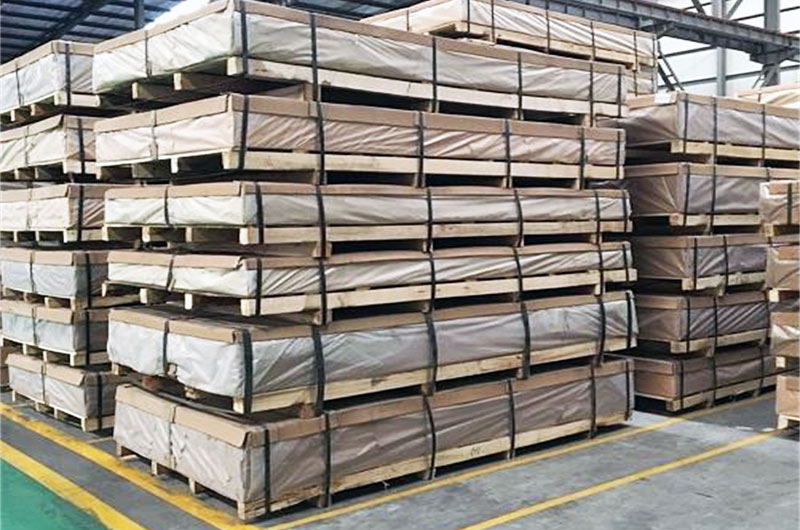
Surface Treatments and Finishes
6061 aluminum plate can be customized with various surface treatments and finishes to enhance its appearance and performance. Some common options include:
1. 6061 Mill Finish Aluminum Plate
Mill finish refers to the untreated, as-rolled surface of aluminum. It has a natural appearance and is often used when appearance is not a primary concern. Mill finish 6061 aluminum palte is commonly used in structural applications.
2. 6061 Anodizing Aluminum Plate
Anodizing is an electrochemical process that forms a protective and decorative oxide layer on the surface of the aluminum. Anodized 6061 aluminum plate is available in various colors and provides excellent corrosion resistance.
3. 6061 Polishing Aluminum Plate
Polishing is a mechanical process that creates a smooth, reflective surface on 6061 aluminum plate. It is often used in architectural and decorative applications to achieve a highly reflective and visually appealing finish.
4. 6061 Brushing Aluminum Plate
Brushing involves the use of abrasive materials to create a brushed texture on the surface of 6061 aluminum plate. This finish is often used in applications where a textured appearance is desired, such as decorative panels.
5. 6061 Coating Aluminum Plate
6061 aluminum plate can be coated with various protective coatings to enhance its performance. Common coatings include paint, powder coating, and organic or inorganic coatings, which provide additional corrosion resistance and aesthetics.
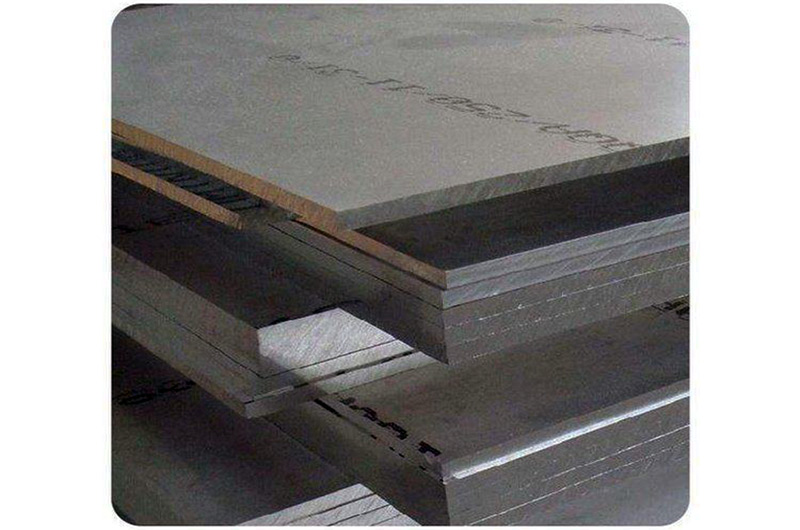
6061 Aluminum Plate Sustainability and Recycling
Sustainability and environmental considerations are becoming increasingly important in materials selection. 6061 aluminum offers several advantages in this regard:
1. Recycling
Aluminum is highly recyclable, and 6061 aluminum is no exception. Recycling aluminum requires only a fraction of the energy needed to produce primary aluminum. The recycling process can be repeated indefinitely without compromising the material's quality.
2. Lightweight Design
6061 aluminum's low density allows for lightweight design in various applications, including transportation. Lighter vehicles, aircraft, and structures contribute to reduced fuel consumption and lower carbon emissions.
3. Energy Efficiency
6061 aluminum's excellent thermal conductivity can help improve energy efficiency in applications such as heat exchangers and heat sinks. Efficient heat transfer reduces energy consumption and contributes to sustainability.
4. Reduced Maintenance
6061 aluminum's corrosion resistance reduces the need for maintenance and replacement of components, further extending the lifespan of products and reducing environmental impact.
6061 Aluminum Plate Quality Standards and Certification
When procuring 6061 aluminum plate, it's essential to ensure that it meets relevant quality standards and certifications. Some of the common standards include:
1. ASTM B209
ASTM B209 is the standard specification for aluminum and aluminum-alloy sheet and plate. It covers various aluminum plates, including 6061, and specifies the requirements for material composition, mechanical properties, and dimensions.
2. AMS-QQ-A-250
AMS-QQ-A-250 is a document that outlines the requirements for the heat treatment of aluminum plates, including 6061. It provides guidelines for achieving specific temper conditions.
3. ISO 9001
ISO 9001 is a quality management system standard that ensures the consistent quality of products and services. Many reputable manufacturers of 6061 aluminum plate adhere to ISO 9001 standards to demonstrate their commitment to quality.
4. RoHS Compliance
The Restriction of Hazardous Substances (RoHS) directive restricts the use of certain hazardous substances in electrical and electronic equipment. Compliance with RoHS is essential for products used in these industries.
6061Aluminum Plate Selection and Procurement
When choosing a 6061 aluminum plate, there are several factors to consider to ensure it meets your specific needs and requirements. 6061 aluminum is a popular choice due to its excellent combination of strength, corrosion resistance, and weldability. Here are some key factors to consider:
1. Alloy Temper
6061 aluminum plate is available in various tempers, which affect its mechanical properties. Common tempers include T6, T651, T4, and T451. T6 and T651 are the most commonly used tempers for structural applications, as they offer a good balance of strength and workability.
2. Thickness
The thickness of the aluminum plate is a critical factor. Consider the application and load-bearing requirements to determine the appropriate thickness for your project.
3. Size and Dimensions
Specify the dimensions of the plate you need. The standard sheet size is typically 48" x 96", but plates can be cut to custom sizes if needed.
4. Surface Finish
Determine the required surface finish for your application. 6061 aluminum plates can be supplied in a mill finish, which is the as-rolled surface, or with various surface treatments, such as polished, brushed, or anodized, depending on your aesthetic and functional requirements.
5. Strength Requirements
Consider the level of strength needed for your application. 6061 aluminum plate has good strength properties, but you might need to choose a different alloy if higher strength is required.
6. Corrosion Resistance
Assess the environmental conditions the plate will be exposed to. 6061 aluminum plate has decent corrosion resistance, but it may not be suitable for highly corrosive environments without additional protection or coatings.
7. Weldability
6061 aluminum plate is generally weldable, but you should consider the welding process and compatibility with your specific welding equipment.
8. Cost
Budget constraints may affect your choice. 6061 aluminum is relatively affordable compared to some other aluminum alloys, but it's essential to factor in the cost of the plate and any additional processing or finishing required.
9. Tolerances
Specify the required tolerances for the plate's dimensions. Tighter tolerances may require more precise machining and, therefore, can be more expensive.
10. Standards and Certifications
Ensure that the aluminum plate meets any industry or regulatory standards that are relevant to your application.
11. Application
Consider the specific application for which the plate will be used. Different applications may have unique requirements, such as flatness, surface quality, or structural integrity.
